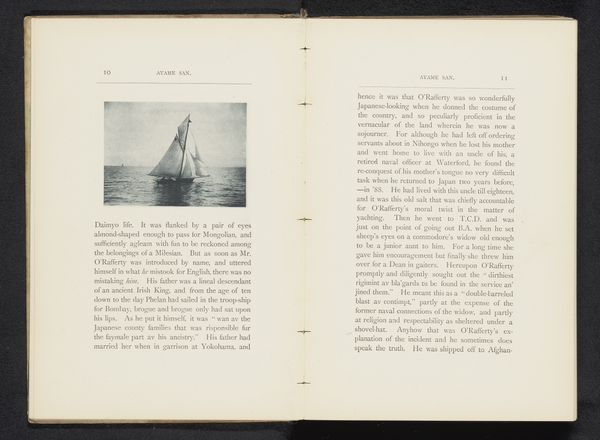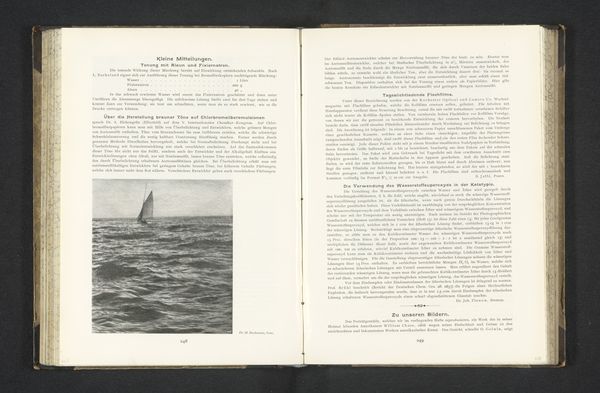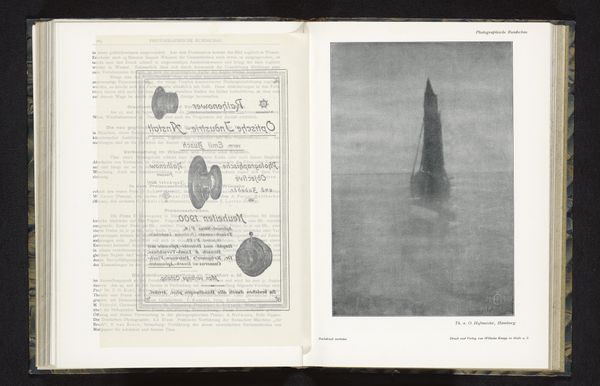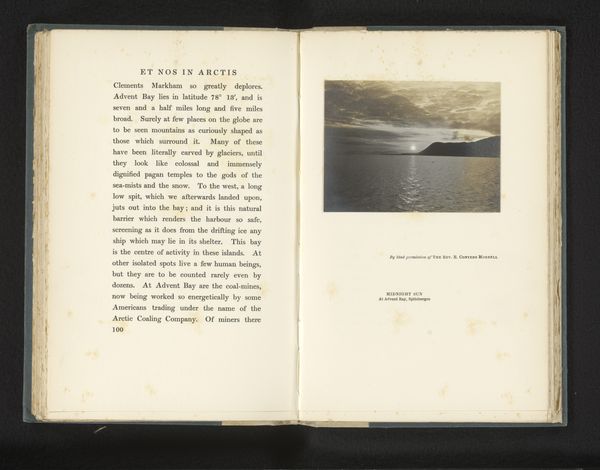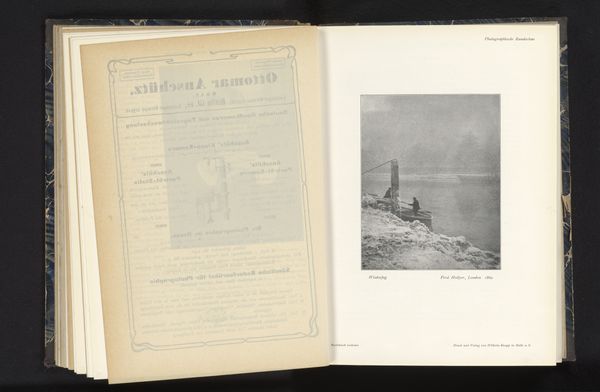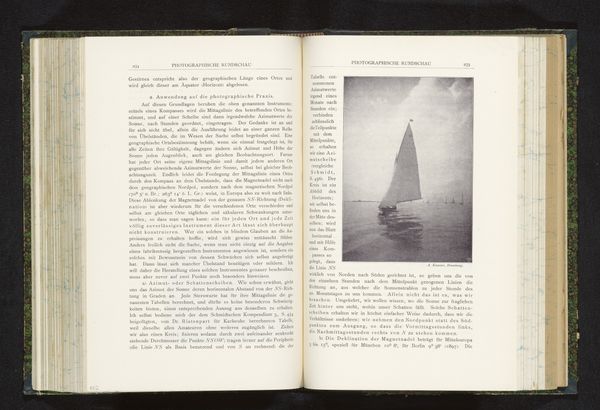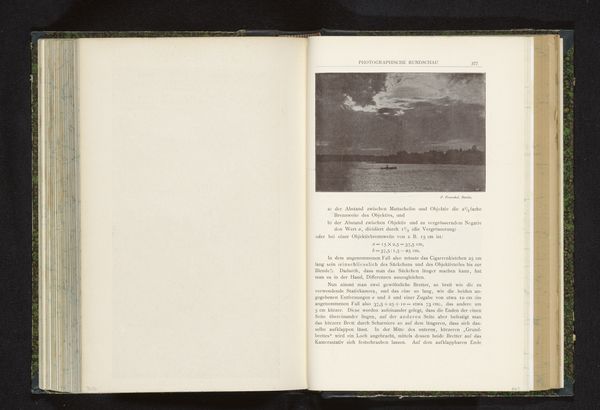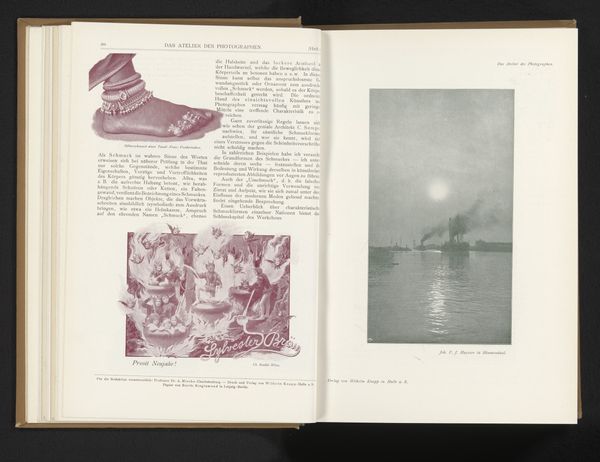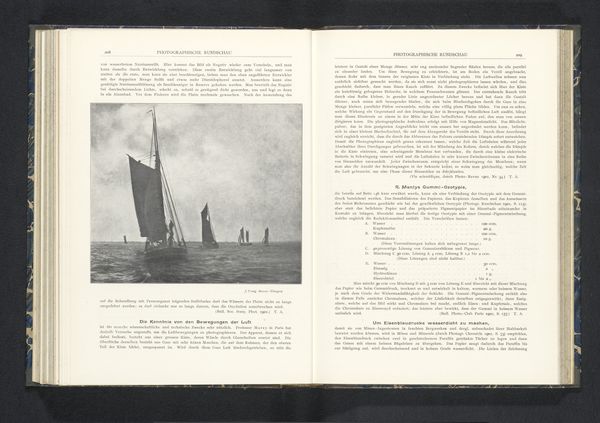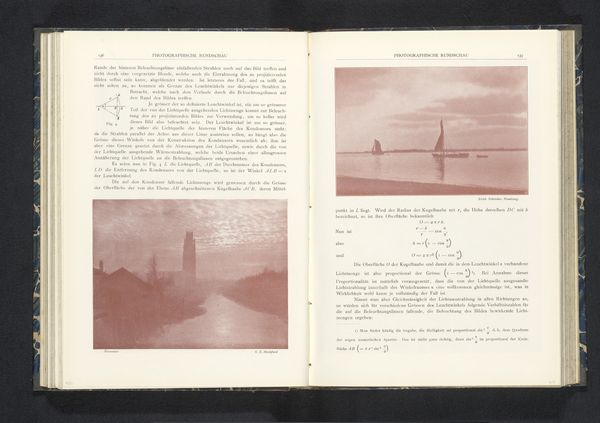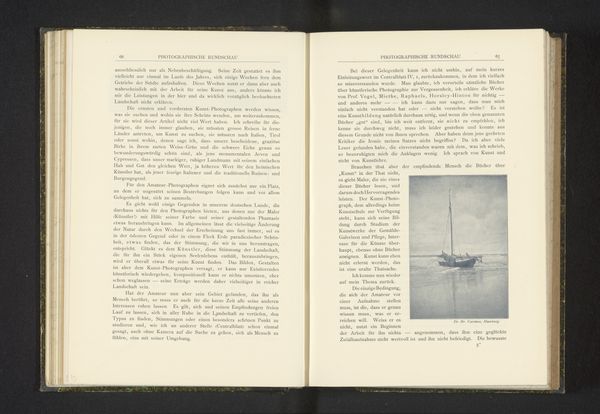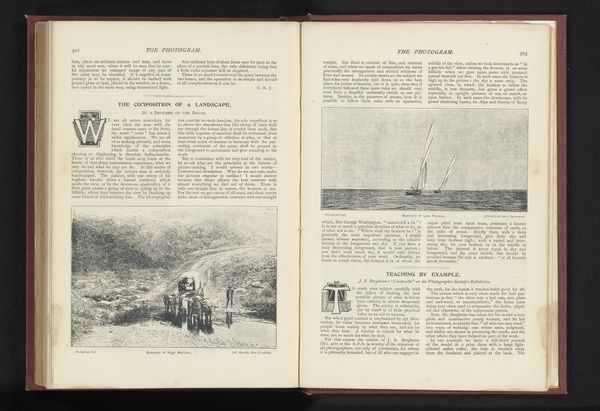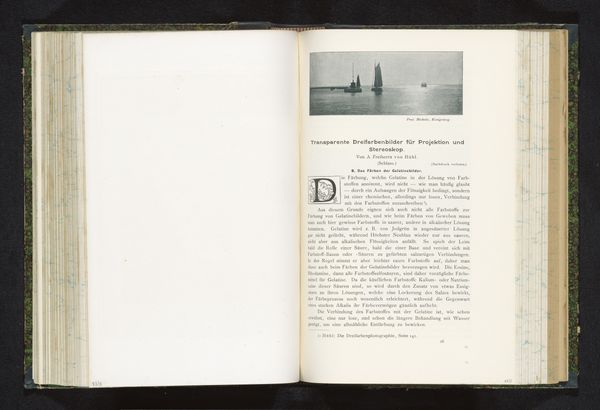
print, photography
#
aged paper
#
still-life-photography
#
homemade paper
#
pictorialism
#
paperlike
# print
#
typeface
#
landscape
#
photography
#
thick font
#
handwritten font
#
classical type
#
thin font
#
historical font
#
small font
Dimensions: height 99 mm, width 129 mm
Copyright: Rijks Museum: Open Domain
Curator: We're looking at "Gezicht op een zeilschip te water," a photograph, likely a print from before 1902, by Hugo Henneberg. What strikes you about it? Editor: I am drawn to the sense of quiet. It looks like aged paper, sepia-toned... There's a vintage feel. I'm interested to learn, what can you tell me about its story? Curator: Considering it's Pictorialist, what processes might Henneberg have employed? He might have manipulated the print’s surface to achieve this painterly, soft focus effect, blurring the lines between photography and handmade art. He likely aimed to elevate photography to the level of 'high art.' What impact do you think that had? Editor: It seems to emphasize the labor and artistry involved, making photography less about mechanical reproduction and more about craftsmanship. Was the consumption of such artwork by wealthy buyers a part of that challenge to art and craft? Curator: Precisely! Consider also the social context. In that period, the burgeoning middle class began enjoying access to cameras, empowering them as documentarians, as potential producers, as owners and consumers of their own images. How did the rise of photography impact traditional portraiture? Editor: Photography, because of being somewhat accessible, certainly made it less elite, didn’t it? Curator: It also gave workers opportunity in the "making" business, something not lost on Materialist thinking. But it still took access and skills. Now, what's your takeaway? Editor: I see the importance of thinking about not just the image, but also the material processes and social forces that shaped its creation and consumption. Thanks! Curator: Agreed. It challenges traditional art boundaries. We've also reconsidered value systems embedded in the history and study of art.
Comments
No comments
Be the first to comment and join the conversation on the ultimate creative platform.
